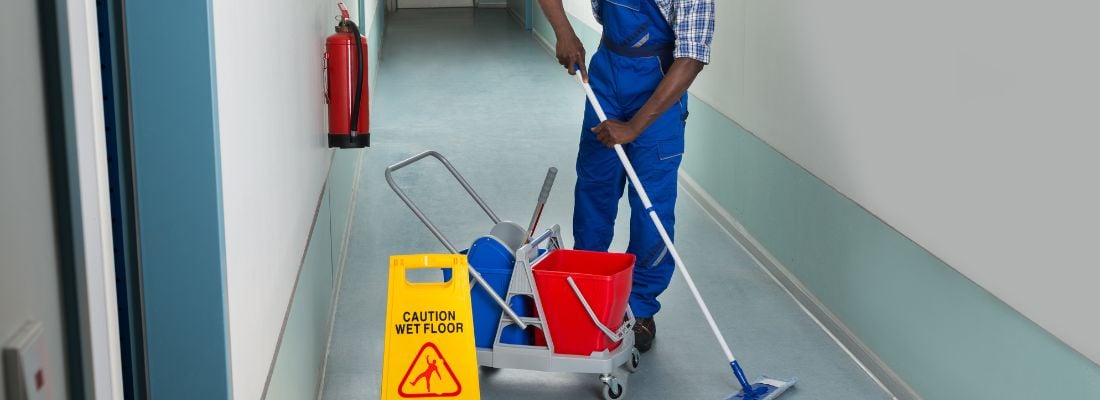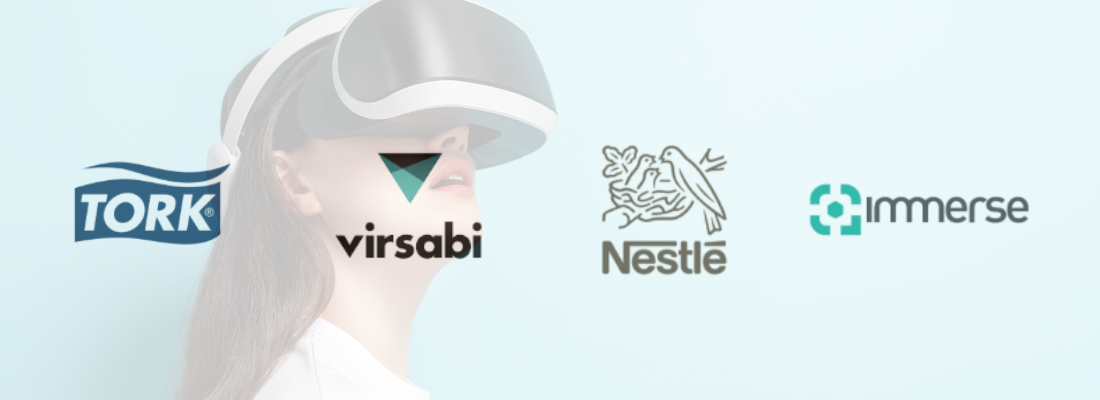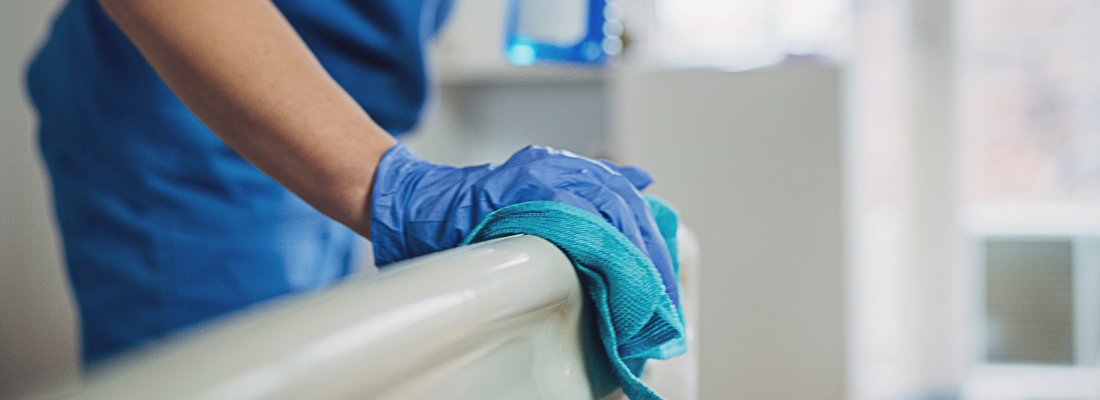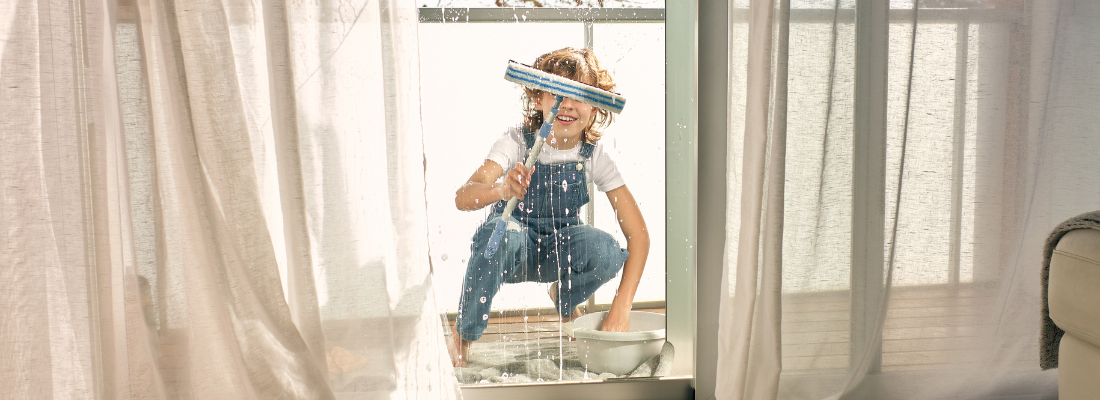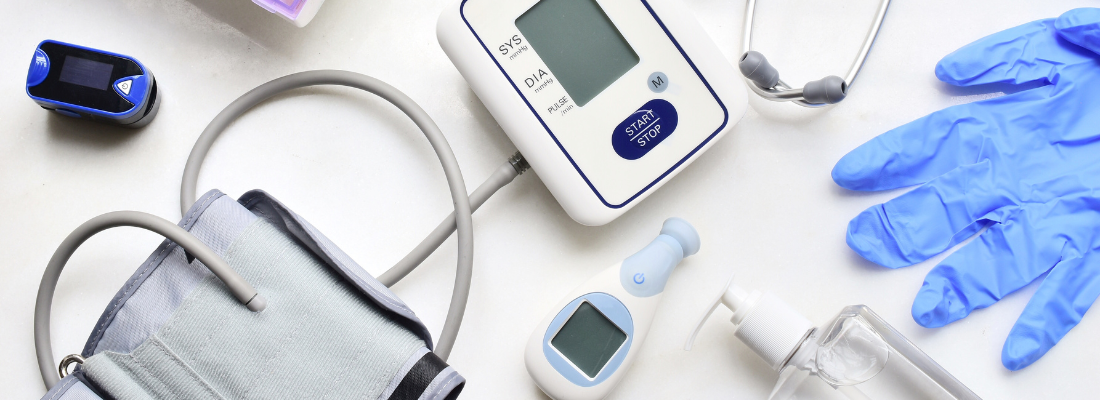Essential guide for healthcare cleaning
Today’s healthcare clinics face an unprecedented challenge: maintaining a truly germ-free environment. Infection prevention isn’t just a best practice anymore – it’s the cornerstone of patient care. In healthcare settings, maintaining a clean and safe environment is paramount. Healthcare-associated infections (HAIs) present a significant risk to patients and healthcare workers alike. That’s why Interclean has created this exclusive guide. We’ll equip you with the essential cleaning practices needed to dramatically reduce infection risks and create a sanctuary for both patients and staff. From mastering high-touch surface disinfection to implementing robust waste management, this guide empowers you to achieve and maintain clean and safe healthcare environment with actionable, evidence-based practices that help mitigate the risks of HAIs and maintain optimal facility hygiene.
1. What are Healthcare-associated Infections (HAIs)?
In today’s world, a germ-free clinic isn’t just a luxury – it’s a lifeline. But there are “hidden” threats, which left undetected, and unmanaged, can be deadly. Healthcare-associated infections are infections that patients acquire while receiving treatment for other conditions within a healthcare setting. Some of the most common types of HAIs include:
- Hospital-acquired pneumonia (HAP)
- Surgical site infections (SSIs) • Urinary tract infections (UTIs)
- Bloodstream infections (BSIs) HAIs often occur due to the inadvertent transmission of pathogens by healthcare workers or the inadequate cleaning and disinfection of surfaces and medical equipment.
The impact of HAIs on healthcare facilities is significant:
- They contribute to extended hospital stays, which not only increase the financial burden on healthcare institutions but also place a strain on hospital resources.
- The cost of treating infections, managing complications, and administering additional treatments adds to the overall expense.
- Beyond the financial cost, HAIs also result in higher rates of patient morbidity and mortality.
- In some cases, patients may face prolonged recovery periods or complications that could have been avoided, resulting in emotional and physical stress.
Understanding these key risk areas and the factors that contribute to the spread of HAIs is crucial for healthcare facilities in developing targeted infection control protocols to reduce the incidence of these infections.
2. Key Strategies for Combatting HAIs
Now, let’s turn our attention to combatting these potentially hazardous situations with best practices, staff training and hyper vigilance of target areas. Targeting high-touch surfaces and high-traffic areas is crucial for preventing HAIs, as frequently used surfaces (e.g. doorknobs, light switches, elevator buttons, and handrails) and communal spaces (e.g. waiting rooms and corridors) such as can quickly spread harmful pathogens, leading to the rapid spread of infections.
Proper Disinfection and Sanitisation Protocols Effective
disinfection and sanitisation protocols are vital to preventing the spread of pathogens within healthcare settings. Using hospital-grade disinfectants is crucial to ensure thorough elimination of harmful microorganisms. In high-risk areas, such as patient rooms, operating rooms, and bathrooms, cleaning should occur multiple times throughout the day. All cleaning products used in healthcare facilities should be registered with the Environmental Protection Agency (EPA) and should be effective against a wide range of pathogens.
Robust Cleaning Schedules and Inspections
In addition to robust daily cleaning routines, certain areas may require more intensive deep-cleaning protocols for hard-to-reach areas, such as vents and corners, or spaces that are prone to higher contamination risks, such as operating rooms. Conducting regular audits and inspections is also essential to ensuring that cleaning protocols are being followed and areas that may need additional attention are identified.
Staff Training on Infection Control
Staff training is crucial for effective infection control, as healthcare workers play a key role in preventing the spread of infections. Continuous training keeps staff updated on best practices, including proper cleaning and disinfection of patient rooms, common areas, and high-touch surfaces, ensuring a safe healthcare environment.
Interesting? Read the full report here!
Receive the best newsletter on cleaning & hygiene - straight to your inbox!
We promise never to send you spam and you can unsubscribe at any time!
